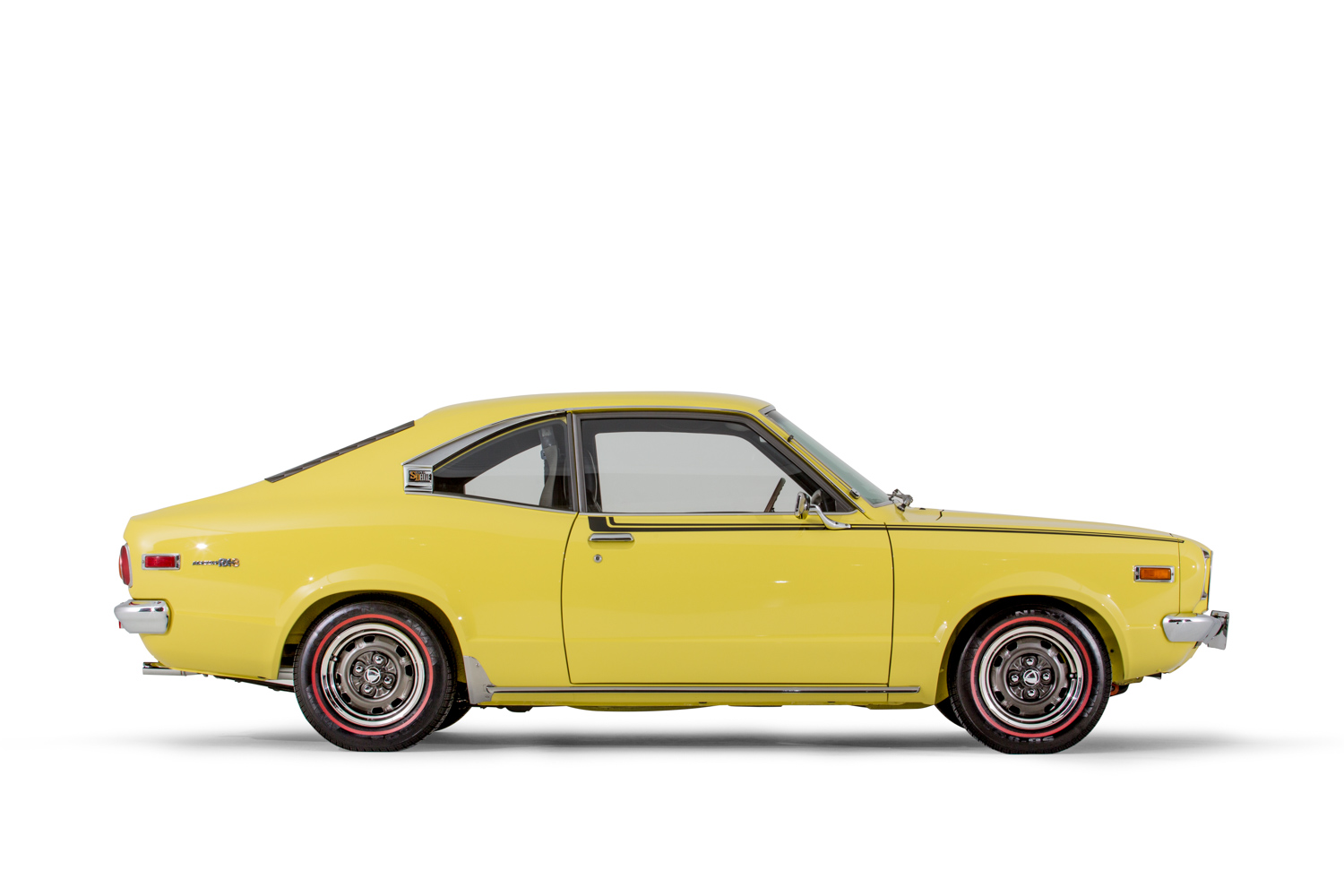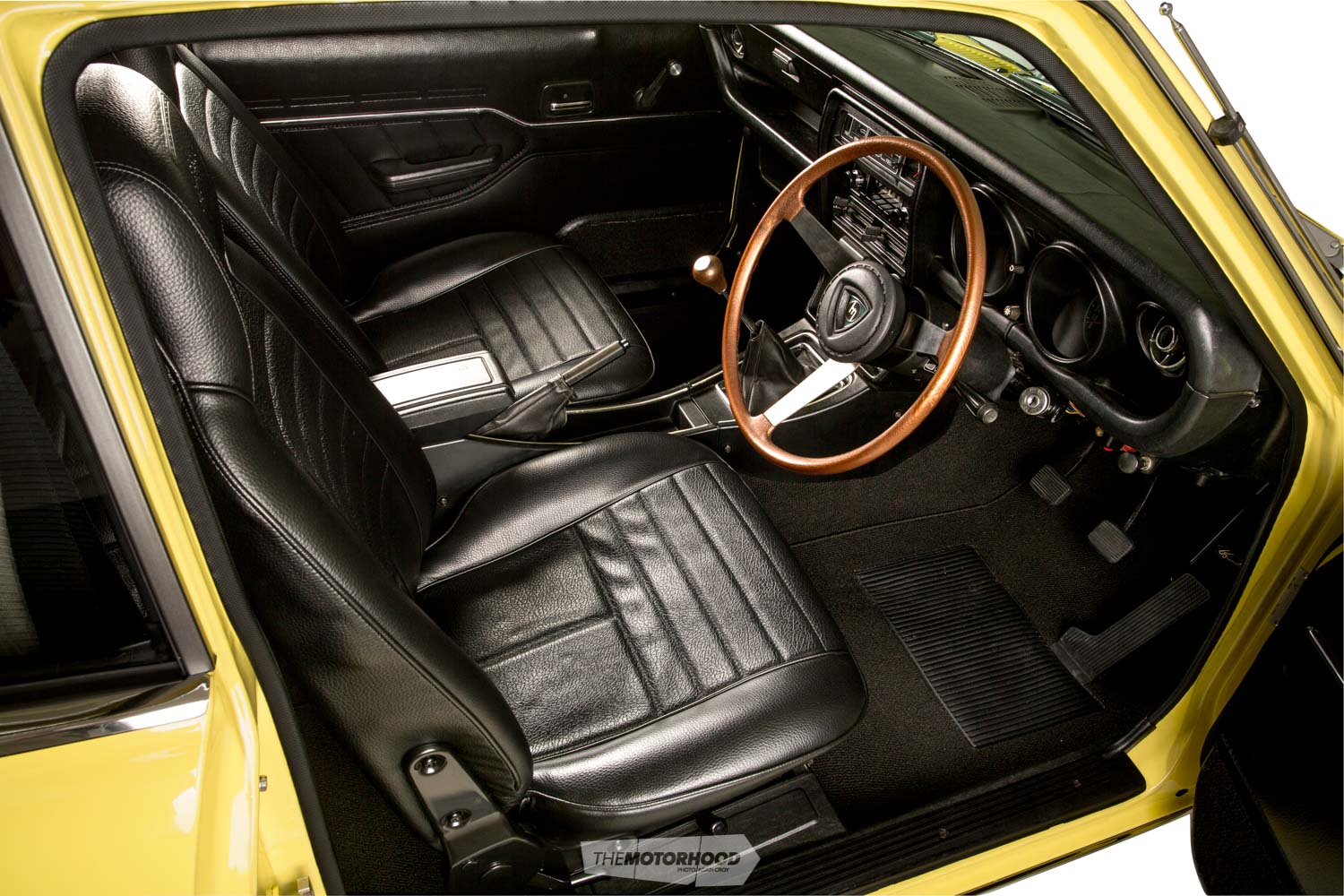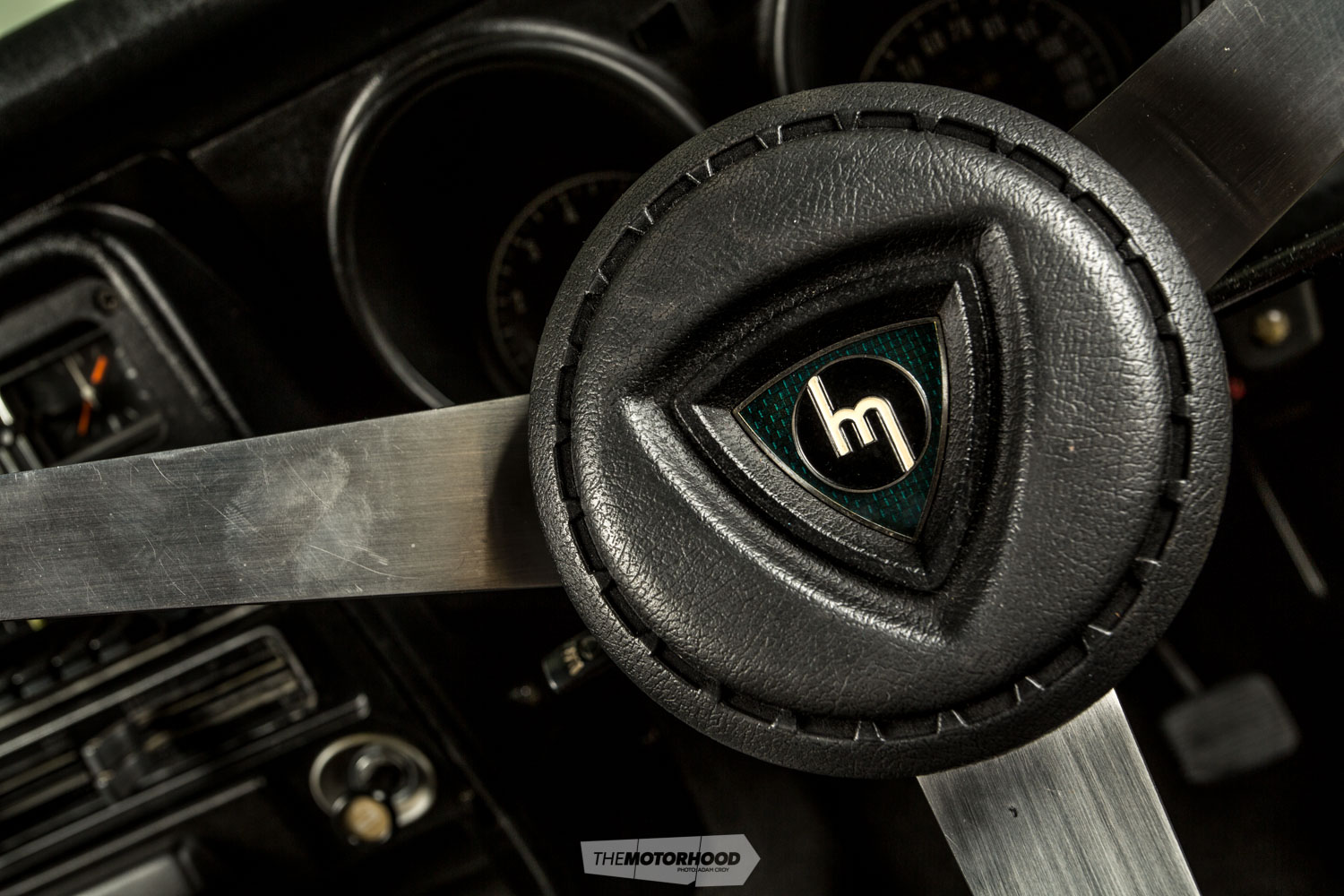Finding an unmolested Mazda RX-3 coupe isn’t an easy task, as many examples have been seriously modified — however, with values of original cars soaring, the search is well worth the effort
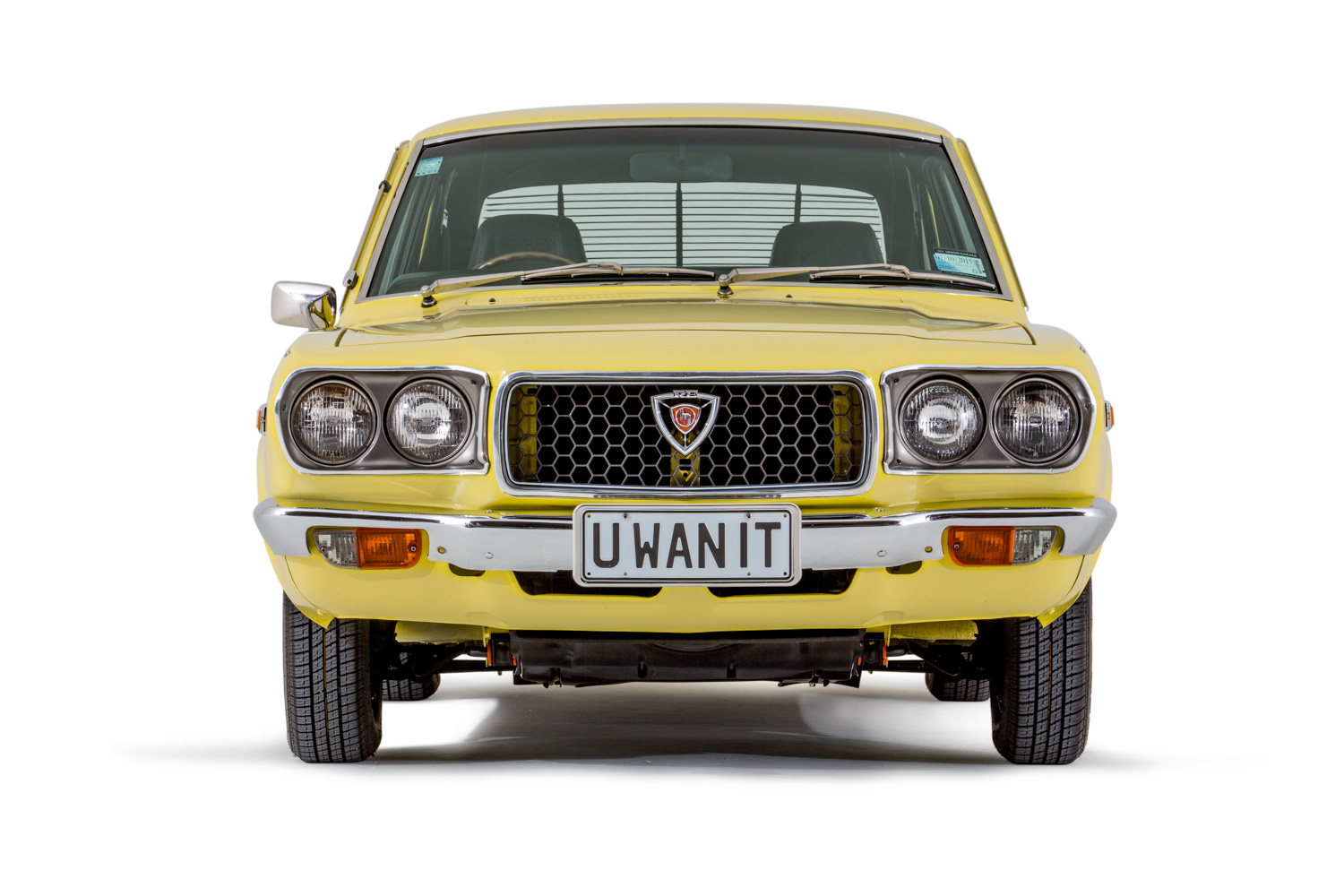
Formed in 1920, the Hiroshima-based company, Toyo Cork Kogyo, started out — as the name suggests — as a manufacturer of corks. However, a few years later it diversified into machine tools and, in 1930, to motorcycles. With little success selling two-wheeled transport, the company graduated to building trucks — the first, the 482cc DA, appearing in 1931. At that time the company began trading under the Mazda name — derived from founder, Jujiro Mazda, with a nod to the Zoroastrian god of light, Ahura Mazda.
Fortunately for Mazda, although it was based in Hiroshima, the factory was situated some three kilometres from ground zero, and only suffered minor damage from the atomic bomb. Quickly rebuilding following the end of World War II, Mazda resumed production in December 1945. The company’s very first car — the R360, a small coupé powered by an air-cooled 356cc V-twin — was unveiled in 1960.
By this time the entire Japanese auto industry was moving into a new era, and the days when they simply built by licence or copied overseas cars were on the way out. As well, although Toyota hadn’t been too successful when it exported its first car — the Toyota Crown — to the US in 1957, lessons has been learned, and from this point on, car manufacturing in Japan went through a period of extraordinary expansion. As well as a better understanding of overseas markets, one of the critical factors behind this huge surge in car production was the manner in which the Japanese car-makers embraced new technology. And perhaps the best example of this was Mazda’s involvement with Felix Wankel’s rotary piston engine.
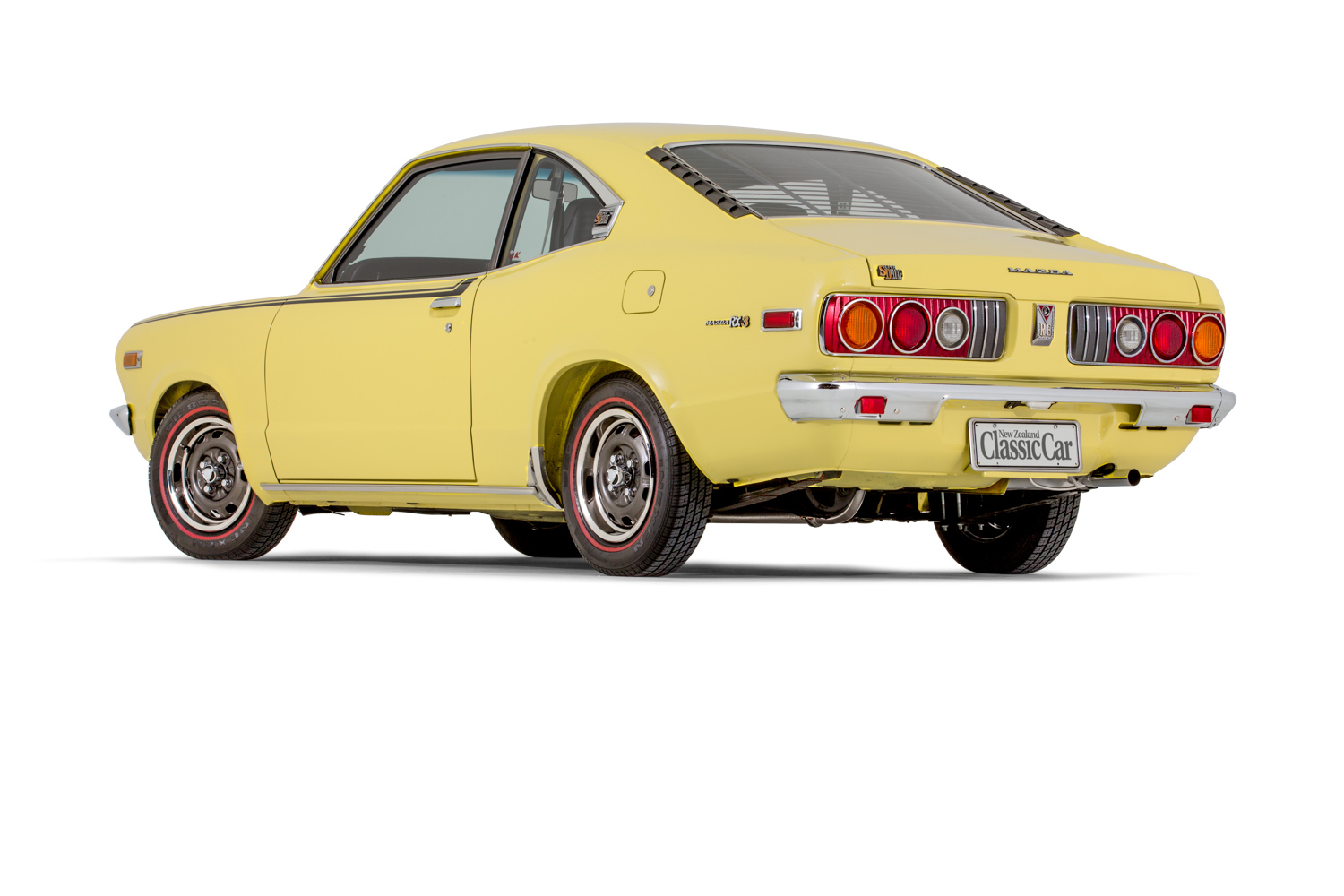
Tim points out that there is nothing on this car that it didn’t come with it from the factory, and that there is nothing missing. Indeed, this Mazda coupe is 100 per cent complete and original
Rotary engine champions
At the time Mazda acquired a license to build Wankel engines from NSU in 1961 it had already established itself as the third-largest Japanese car manufacturer, and was nurturing big plans for the new-fangled powerplant — with its light weight and compact size, Wankel’s engine seemed perfectly suited to Japan’s penchant for miniaturization. With those factors in mind, Mazda planned a whole range of rotary-powered cars, starting with the spectacularly styled Cosmo 110S of 1967.
By the early ’70s the master plan was coming together — meaning an equivalent rotary-engined car for each conventionally powered Mazda. Hence the 808 became the RX-3, the 616 the RX-2 and the 929 the RX-4. Alas, by the time the RX-5 arrived in 1975, despite the proved reliability of Wankel’s design, rising fuel prices and the difficulty of cleaning up the rotary’s dirty emissions was taking its toll on Mazda. Finally, of course, it drew back from its high ambition of providing a whole range of rotary-powered cars, sensibly cutting the range to a single model — the RX-7.
Although Mazda never quite achieved its original brave and lofty goal for Felix Wankel’s engine, what it did accomplish was spectacular. While major European and US car-makers such as GM, Mercedes-Benz, Citroën, Rolls-Royce, AMC, Alfa Romeo and Porsche — not to mention fellow Japanese firms Suzuki, Toyota and Nissan — never got to grips with Wankel’s concept, Mazda would be the only company to build, develop and successfully sell rotary-powered cars.
Alas, the difficulties in cleaning up the rotary engine’s emissions would finally lead to Mazda removing the RX-8 from the European market in 2010, and by 2012 it ceased production altogether. However, Mazda isn’t finished with the rotary engine yet, and is already at work on the next generation rotor-motor.
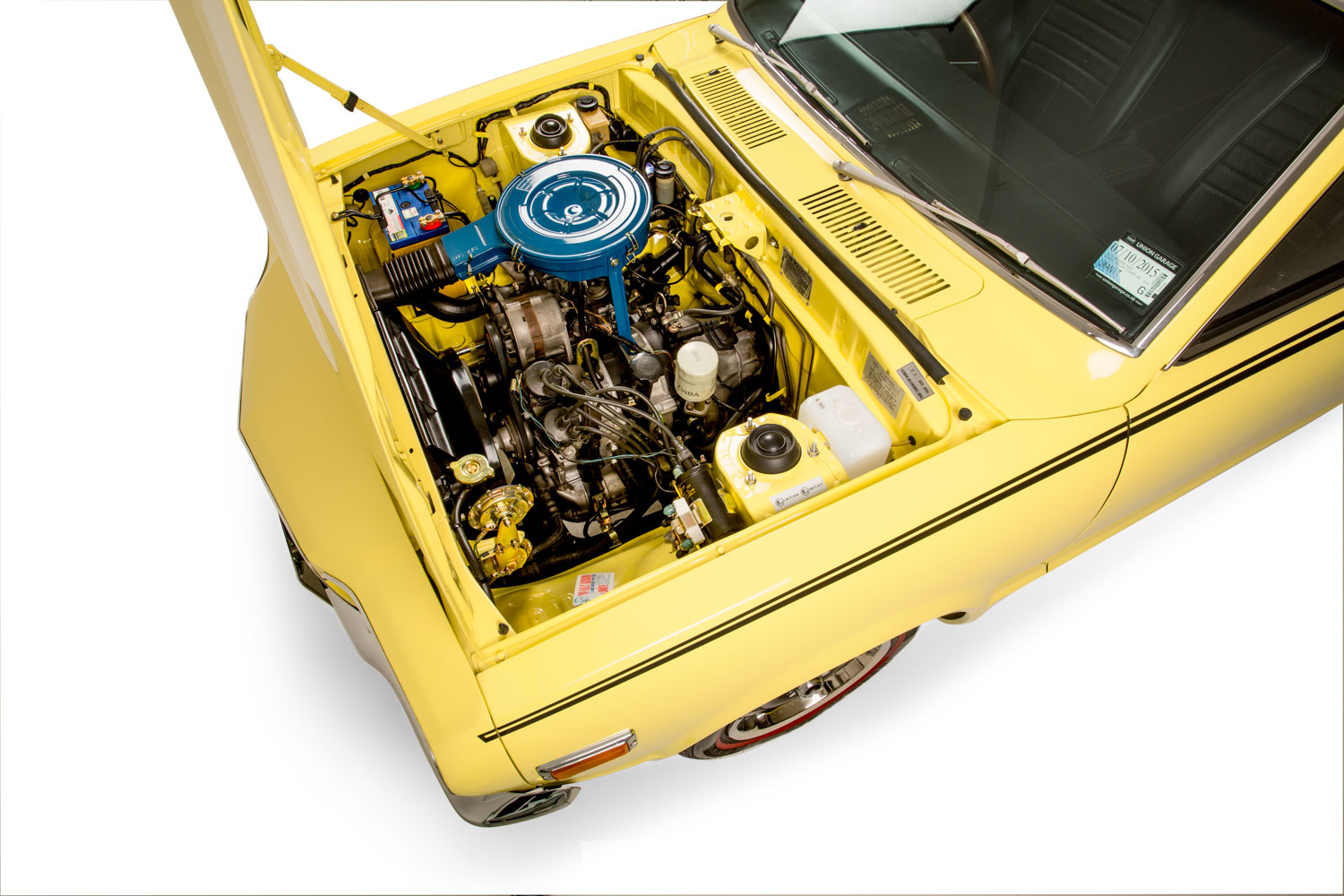
Road and Track
Eager to prove the reliability of its rotary engines, from the beginning Mazda was quick to get examples of the RX-3 onto race tracks throughout the world — eventually scooping up trophies and awards wherever they competed. In Australia, after the early entry of an R100 at Bathurst in 1969, RX-3s went on to score several class wins at that famous circuit. Racing RX-3s also appeared in New Zealand, competing for honours in the B&H 500 — while the late Bill Shiells (now recognized as New Zealand’s first rotary guru) took to rally stages in an RX-3, inspiring many others to follow suit.
RX-3 coupés continued to be successful in motor sport until supplanted by the RX-7. Eventually, of course, a Mazda rotary-engined car — the 787B — became the first Japanese car and the first rotary-powered one to win outright at the 24 Hours of Le Mans, in 1991.
Rotary-engined Mazdas also became an integral part of the import-car scene — as immortalized in movies such as The Fast And the Furious — and modifications were the name of the game. The cars were eminently tuneable, and young performance-car enthusiasts soon discovered the noisy thrills of hard-tuned rotor-motors — along with massive alloy wheels, spoilers aplenty, fully customized interiors and garish paint jobs. However the tide has turned for the RX-3 in recent years, as it has with the market for other Japanese cars of the ’70s, and originality is now becoming a much more prized factor as later Gen Xers rediscover their youth.
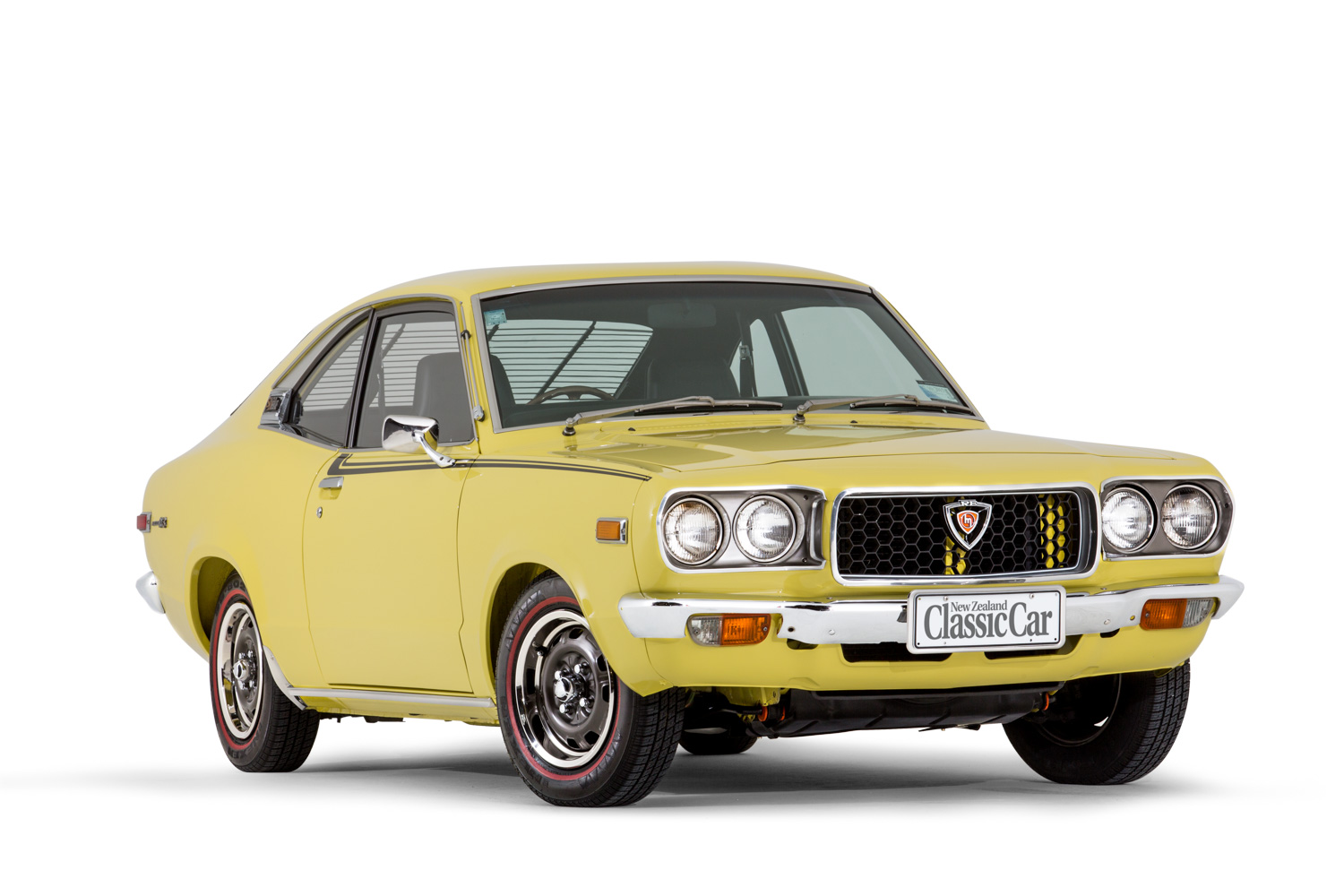
Due to the number of RX-3s raced and modified, original cars are now few and far between — which is reflected in the manner in which their value has taken off in recent years. Over the ditch, RX-3 coupés are regularly being offered for prices between A$40,000 to as much as A$88,000. From what we can gather, the RX-3 is now believed to be the second most popular car to restore in Australia behind the XY GT Falcon. RX-3 sedans are also becoming collectible — and they’re a little easier on the pocket, being valued at around 20 per cent less than the coupés.
This trend is being matched by prices in New Zealand — just a few months ago an unrestored but original RX-3 coupé sold for $42,500. As an indicator of the rarity of unmolested RX-3s, this car was actually purchased by Mazda Australia, the plan being to restore it for its own collection.
Rotary passion
To say that Tim Wood — a Hamilton-based businessman — is a bit of an enthusiast for rotary-powered Mazdas is something of an understatement, as the RX-3 featured here is actually his 19th Mazda rotary and his seventh RX-3 (five coupés, one sedan and one genuine station wagon). However, at the age of 15, Tim’s first car was a MkII Ford Escort Sport 1600 but that car was stolen on his 16th birthday. Not long after the Escort had been swiped, Tim and his father attended the Ellerslie Intermarque Concours show.
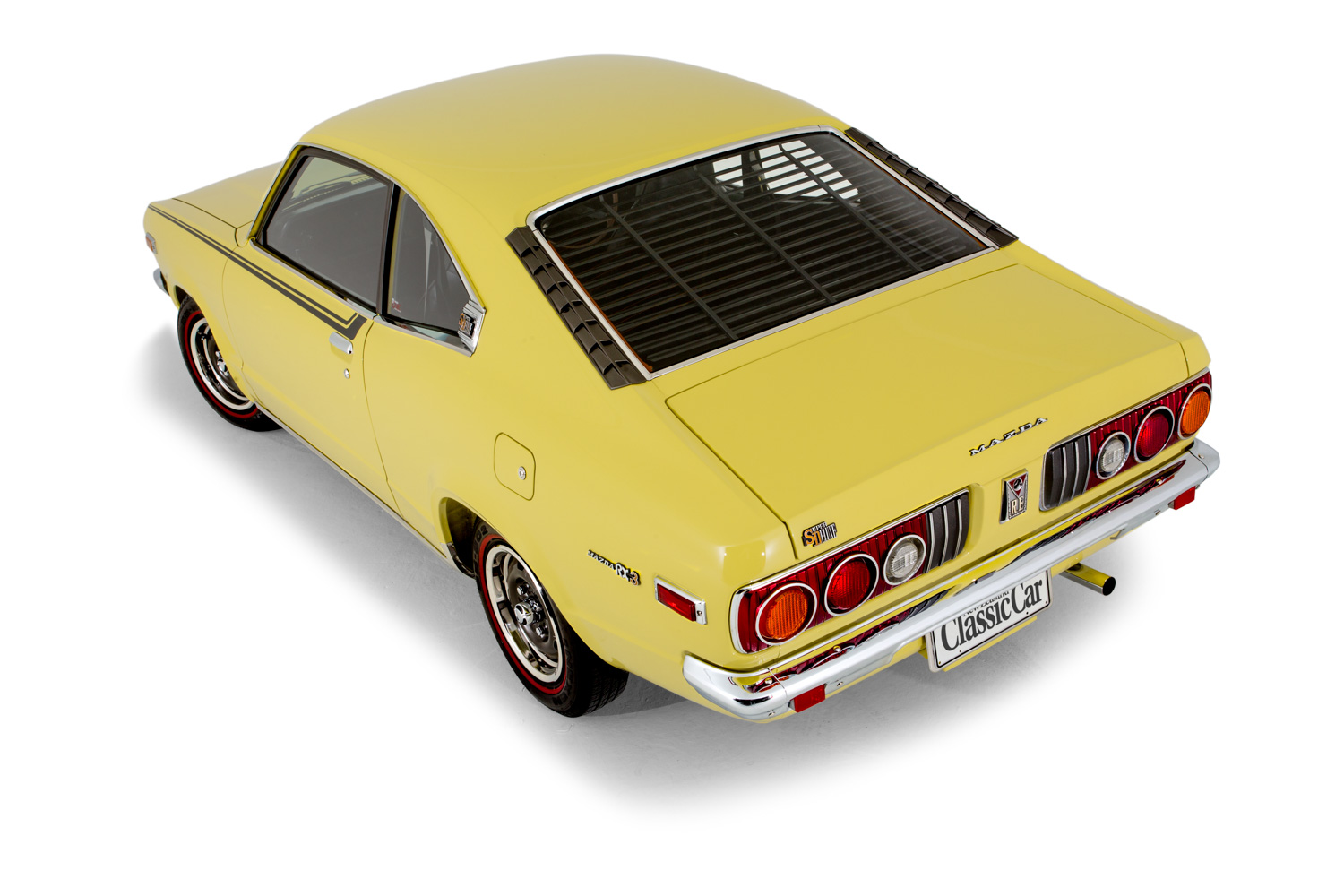
Tim Wood is a bit of an enthusiast for rotary-powered Mazdas, as the RX-3 featured here is actually his 19th Mazda rotary and his seventh RX-3
Although the Intermarque Concours was predominantly for European cars, during the ’80s a few Japanese car clubs were making inroads into the show, and Tim remembers being stopped in his tracks when he stumbled across the Mazda Rotary Enthusiasts’ Club’s display featuring a pair of RX-3s. It was love at first sight — his first rotary-powered car beckoned. Following this show, Tim used the $1500 insurance pay-out from the stolen Escort to buy a 13B-engined RX-2 coupé – these cars really were that cheap to buy back in the early to mid ’80s.
Over the following years Tim followed the Japanese car-tuning trends of the day, and each successive Mazda rotary he owned was subjected to ever-increasing levels of changes and modifications. The culmination of all this activity eventually led to an extensively customized RX-3 show-car — an aquamarine coupé boasting a glittering, chrome-highlighted engine bay. Tim still retains this car’s distinctive personalized registration plate — UWANIT.
Gradually, he began to shift his automotive passion from Japanese to US-sourced classics — and over a six-year period he owned several Mustangs and Chevrolet trucks. However, after deciding to sell his ’51 Chev truck in order to build a house, Tim felt the desire to return to his original motoring passion, and decided it was time to reignite his love for rotary-powered Mazdas by finding another RX-3.

Perfect car — perfect story
Initially this seemed like an easy ask, and he reckoned that he would be able to source a good RX-3 coupé for around $20,000 — but what Tim hadn’t counted on was the simple fact that while he’d been driving around in V8 cars and trucks, the price of RX-3s had doubled.
Making the search even more difficult, after years of modifying Mazdas, Tim was now becoming passionate about totally original cars. The dream was to locate an all original, matching numbers, New Zealand–new, black-and-silver-plate RX-3 coupé, but Tim quickly began to realize that his quest was going to be near impossible. Over the next six months, he drove all over the North Island and took two trips to the South Island looking for the right car — all to no avail.
Finally, salvation came via a friend in Melbourne who owned one of Tim’s old RX-3 coupés. He put Tim onto a guy in Sydney who he believed owned an original numbers-matching restored RX-3 coupé in Flare Yellow — perhaps one of the most desirable colours for these cars.
Luckily Tim happened to be in Sydney for work, and though a quick phone-call revealed that the RX-3 wasn’t for sale, the owner agreed that he could come and check it out.
Within 20 seconds of viewing the yellow RX-3, Tim just knew that this was absolutely the right car — it had a perfectly straight body, perfect door gaps and was totally complete from head to toe. The car’s owner, a panel-beater, had spent much time on the car but hadn’t quite finished the restoration off. After further discussion, Tim learned that only two other owners had enjoyed this RX-3, and for most of its life had been owned by the original lady owner, a Mrs Dacic. She had purchased the car from Addison Motors Pty Ltd, Adelaide, on December 11, 1973. When she finally sold the RX-3, it went from Adelaide to Brisbane before ending up in Sydney.

All panels, badges and running gear were as original, including an original numbers-matching 10A twin-distributor engine and four-speed gearbox. Quite literally, it was the perfect car with the perfect story. Tim had to have it, and finally persuaded the owner to part with the car — a price was agreed upon, and Tim paid a deposit on the spot. Three weeks later he flew back to Sydney, picked up the car and arranged for it to be shipped to New Zealand.
It arrived on our shore in October 2014, and since then Tim has finished off a lot of the detail work on the Mazda — including fully restoring the jack and air cleaner, zinc-plating bolts and retrimming the seats. The car’s distinctive, candy-apple-red rear-light surrounds — a feature exclusive to the first-series cars — have also been carefully refinished.
Tim points out that there is nothing on this car that didn’t come with it from the factory, and that there is nothing missing. Indeed, this Mazda coupé is 100 per cent complete and original, leading Tim to believe that his Flare Yellow example is one of the most original RX-3 coupés in New Zealand — and, after checking out his car in our studio, we’d have to agree with that.
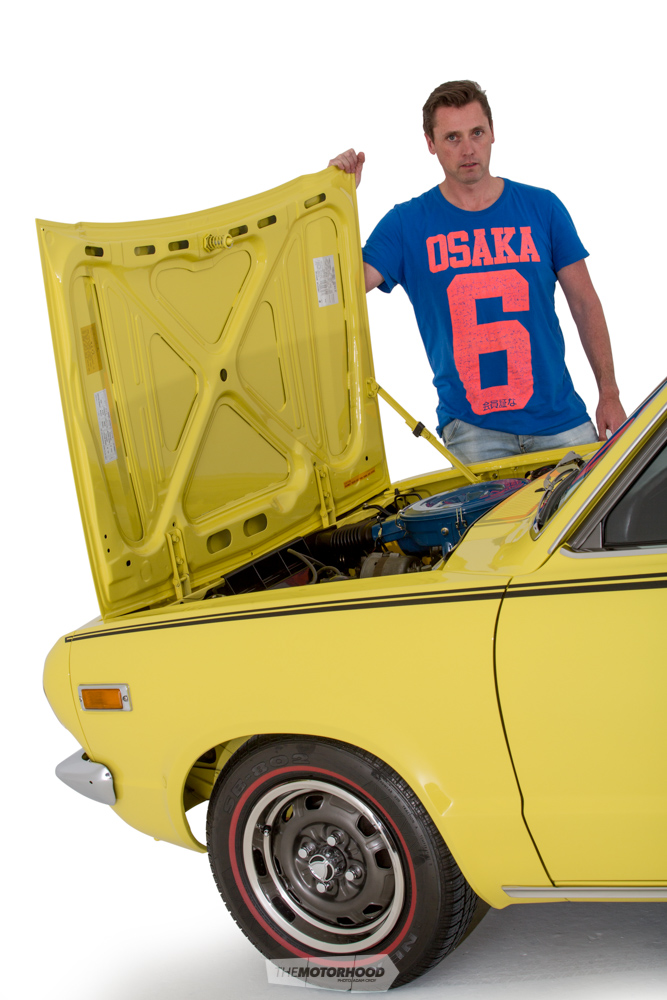
1973 Mazda RX-3 Coupe
Engine: Mazda 10A Series Wankel
Capacity: 982cc
Bore/stroke: N/A
Valves: N/A
Comp Ratio: 9.4:1
Max power: 81kW at 7000rpm
Max torque: 135Nm at 4000rpm
Fuel system: Hitachi KCB306 carburettor
Transmission: Four-speed manual
Suspension F/R: Independent via MacPherson struts / live axle, leaf springs and shock absorbers
Steering: Recirculating ball
Brakes F/R: Disc/drum
Wheels/tyres: Pressed steel/155 SR13
Dimensions
Overall length: 4065mm
Width: 1595mm
Height: 1350mm
Wheelbase: 2310mm
Kerb weight: 880kg
Performance
Max speed: 180kph
0-100kph: 9.4 seconds
Standing ¼ mile: 16.9 seconds
This article originally appeared in NZ Classic Car issue No. 296 — click the cover below to purchase a print copy of the magazine







